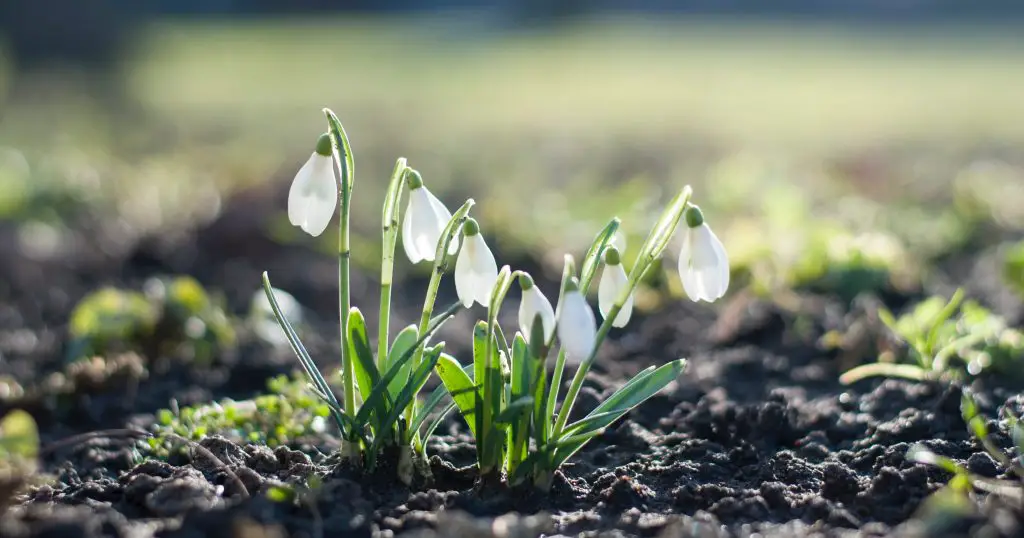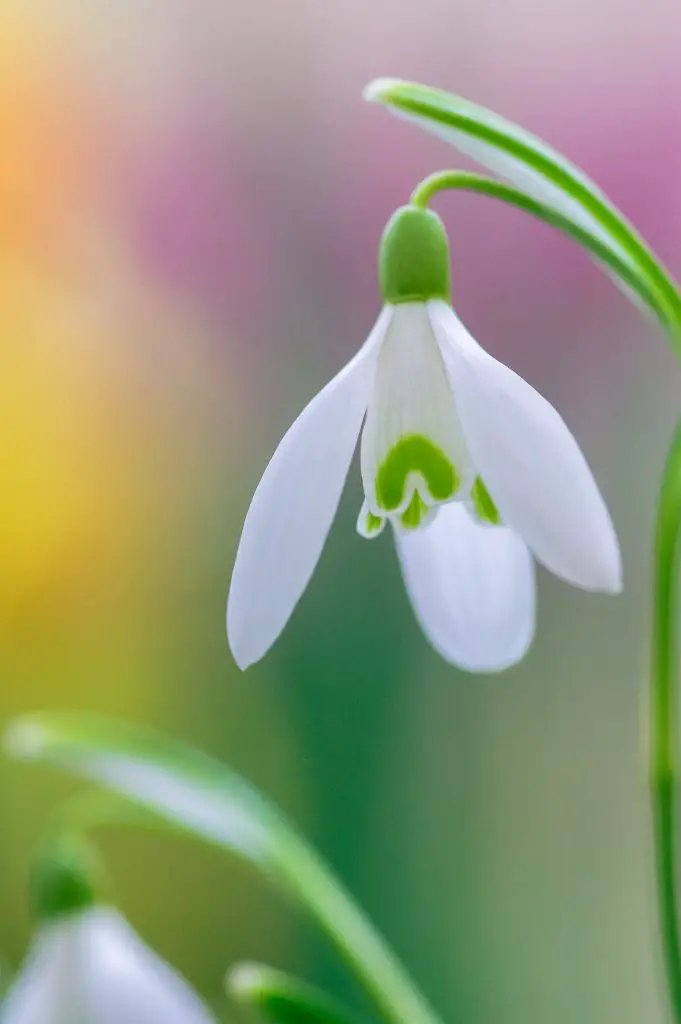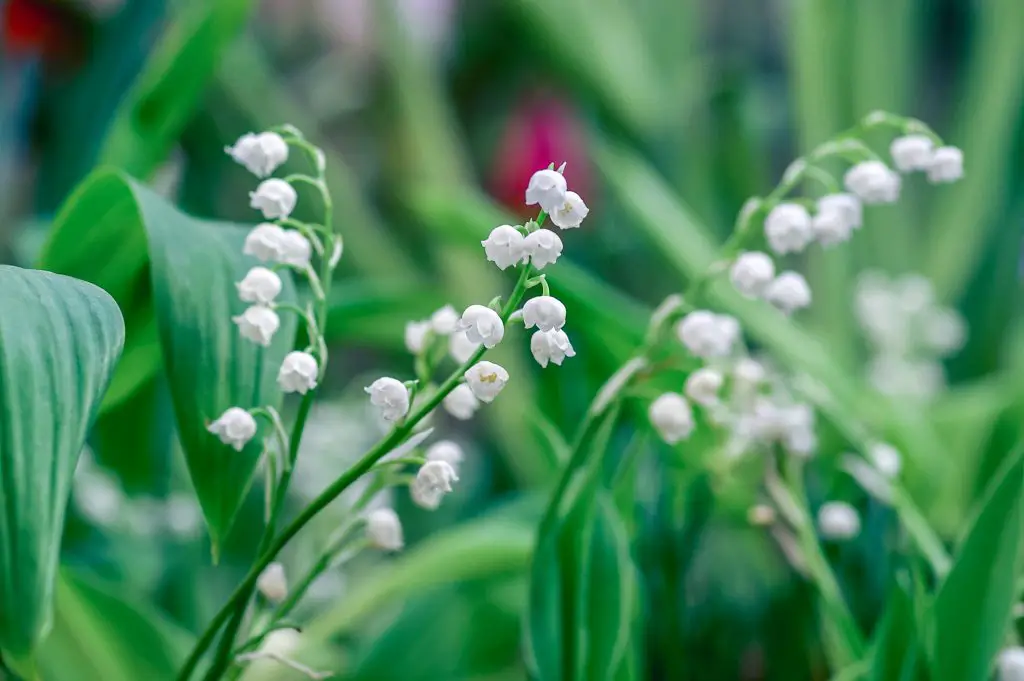What Is The Difference Between Snowdrops And Lily Of The Valley? Snowdrops and the lily of the valley are two of the most popular spring flowers to grow in the garden they have a similar appearance in terms of their flower shape and color however there are some significant differences so what are those differences?
Both the snowdrops and lily of the valley are plants with small white cup-shaped flowers that typically reach 6 to 8 inches tall. However, the lily of the valley foliage is generally reminiscent of a hosta with relatively lush thick leaves and it has many flowers coming off a flower stalk whereas snowdrops have relatively sparse foliage with a single flower being produced from each flowering stem.
In addition to these physical differences, the plants also differ in the extent to which they spread throughout the garden. Lily of the valley is a plant that is known to be relatively invasive and will spread relatively quickly through underground rhizomes. Whereas snowdrops are grown from single bulbs and will multiply over time, however, the rate of this spread is generally relatively slow and most gardeners need to transplant the bulbs on a consistent basis year-on-year to get a large spread of these plants.
Additionally, these plants also flower at different times during the spring. Snowdrops are renowned as being one of the earliest flowering bulbs in the garden whereas lily-of-the-valley plants will flower in mid to late spring which is another way of differentiating between the plants.

About Lily Of The Valley
Lily of the valley is a plant that is generally found in woodlands settings and was originally native to the northern parts of Europe and Asia. However, once it was transported into parts of North America it has become an invasive species.
The plant itself is popular among florists because of its sweetly scented flowers, however, this plant is also known to be highly toxic to humans and many other animals which makes it an ideal plant for growing in areas that have large populations of deer or rabbit as they will not touch it.
The plant typically grows 6 to 8 inches tall and will spread quickly to form dense colonies that will outcompete most other plants in the right conditions. The plant generally prefers to grow in part to full shade in relatively moist soil that is rich in nutrients but also free draining. In dry conditions plant’s growth is generally restricted significantly.
This makes the plants an ideal ground cover in relatively shady conditions at the base of trees with large canopies, however, it is important to restrict the plant’s movement around the garden by regularly removing any unwanted plants.
In terms of climate tolerance, lily-of-the-valley plants are well adapted to relatively cool conditions and survive and thrive in the northern parts of the US.

About Snowdrops
Snowdrops, like the lily of the valley, have small delicate flowers however the number are blooms produced by an individual plant is significantly lower. The plant itself is produced from bulbs and is a popular herbaceous plant in places like the UK where the plant thrives. They are most commonly used in woodland settings to create an early flower display with most varieties producing a bloom before the 20th of March in the Northern Hemisphere.
The plants themselves have foliage that is reminiscent of an allium with the plant having relatively strappy leaves that are narrow and flat. Typically, this foliage will appear in late winter before being followed by the production of a flower. The plants are an excellent option for growing in areas where there is a large amount of wildlife as they are highly resistant to deer and other animals and generally do not have any significant disease problems.
However, these plants have the advantage over the lily of the valley because they are not nearly as toxic and therefore can be used in-home garden even if you have pets. The flowers if ingested will create a mild stomach upset but they are not likely to cause any serious or long-lasting problems.
The plants prefer rich moist and free-draining soil that has plenty of nutrients. They are typically planted on mass by gardeners in woodlands under trees and at the front of borders. The bulbs typically need to be planted around 2 to 3 inches deep with a spacing of approximately 2 to 3 inches between each bulb.

The bulbs generally require virtually no maintenance throughout the year and will happily flower year-on-year without any intervention from the gardener. They do not require deadheading and foliage should definitely not be cut back after the plant has flowered because the bulbs need to store additional sugars from the foliage for the following year.
Most gardeners wanting to increase their stocks of bulbs will typically divide snowdrops after they have flowered ideally as the foliage is beginning to wane. This is considered the best time because it is easy to find the plants and is unlikely to affect the flowering for the coming season.
Like the lily-of-the-valley these plants are also highly resistant to cold conditions and will quite happily survive down to Zone 3 in most cases, however, the plants are generally not recommended for zones greater than 8 or 9 because the plants need a period of cold to flower properly.
I hope you found this article informative and have great success growing these flowers at home in your own garden if you have any additional comments or questions please leave them in the section below.
Relevant Articles
Rose vs Tulip: What Is The Difference And Which One Is Better?
Are Calendula Deer Resistant? (And How To Protect Them)
Do Zinnia Seeds Need Light To Germinate?
Is It Too Late To Sow Cosmos Seeds?
